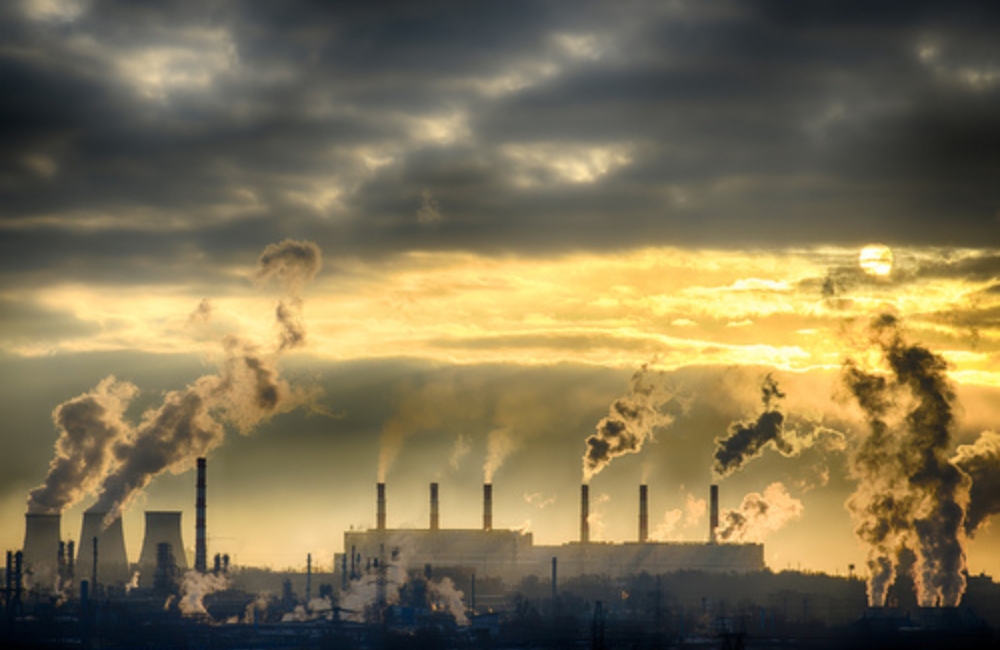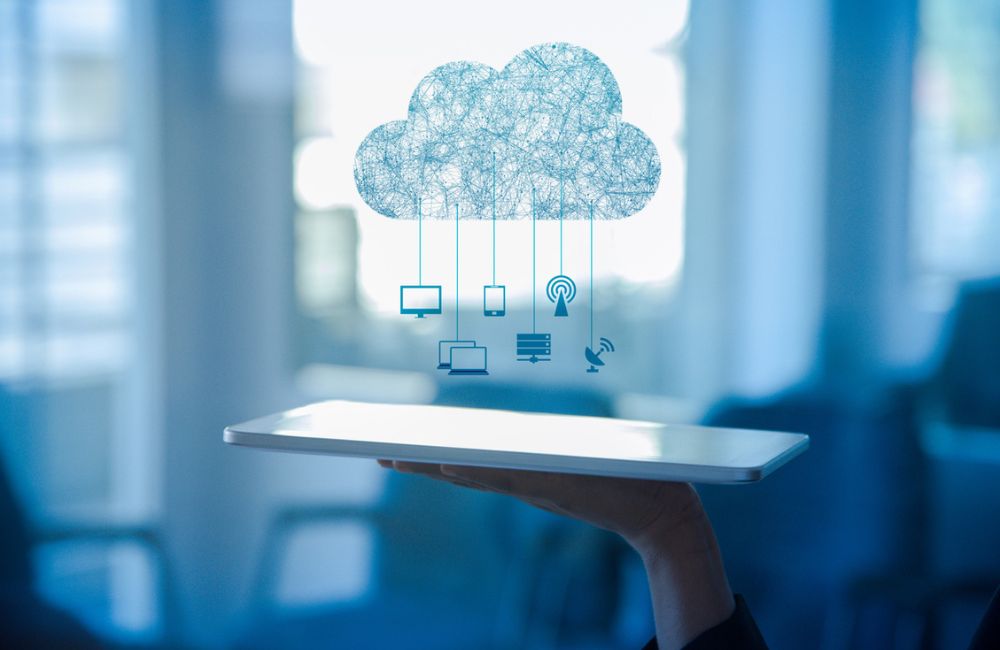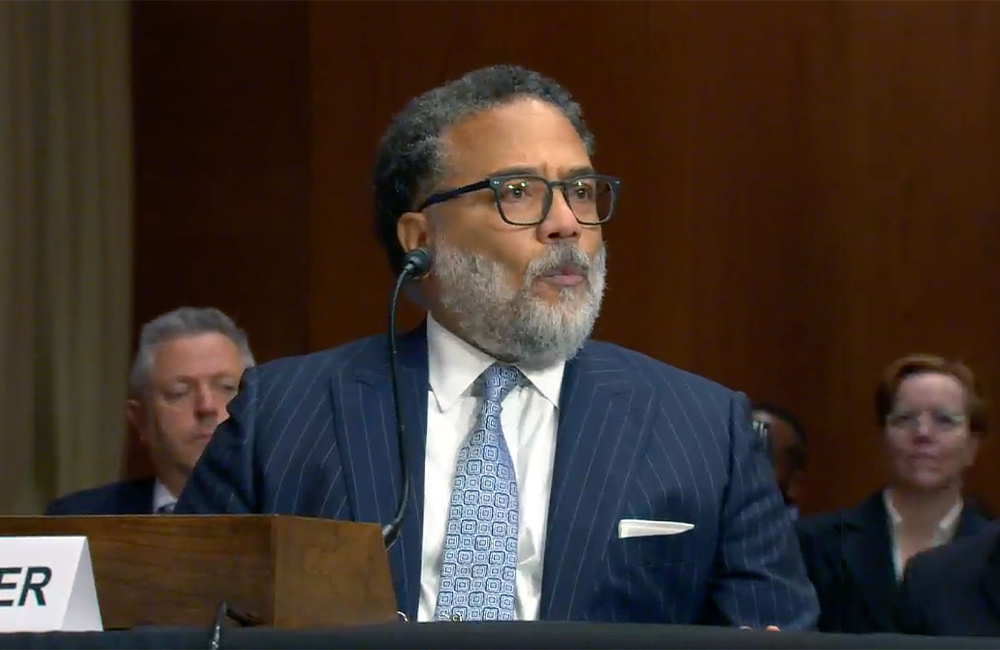Tech Drives Federal Plans to Reduce Carbon Footprint at DOE
Electrification, cutting-edge research labs and cooling technologies are helping agencies reduce carbon footprint.

Technology plays a major role in the Department of Energy’s plan in 2023 to achieve sustainability goals and reduce greenhouse gas emissions, tackle supply chain issues and meet other directives from the White House.
The new initiatives come on the heels of President Biden’s 2021 executive order to establish the U.S. as a leader in sustainability goals, like achieving 100% carbon pollution-free electricity by 2030 and net-zero emissions from federal procurement.
Electrification could significantly reduce greenhouse gas emissions, according to DOE Team Lead for Sustainability Cate Berard. The Office of Energy Efficiency and Renewable Energy is currently using funding to spur innovation and help communities transition from older technologies to newer technologies reliant on electricity as their primary source of energy.
“There’s a really big push within the federal government and across the country for electrification. It’s converting things that we use everyday like water heating and cooking from using gas and fossil fuels to electricity,” Berard told GovCIO Media & Research. “We’re also working on greening the grid. Then when these two things come together we will be more sustainable, climate-friendly and resilient.”
IT plays a big role in helping DOE boost its supply chain resilience, sustainability and security. Berard said DOE’s cutting-edge research labs enhance the agency’s research into climate modeling, which is helping Energy leaders make decisions about resilience.
“In DOE’s climate action and resilience plan, we ask all of our sites to do a vulnerability assessment. They had to assess their vulnerabilities and then look at what technologies would address those vulnerabilities and come up with a long-term plan for implementing those — what can we afford and what makes the most sense?” Berard said. “All of our sites also have a personalized look at how climate is effecting them now and up to 50 years in the future so what can we do to mitigate that and also be resilient for things we can’t avoid like wildfires and hurricanes.”
Implementation instructions from The White House Council on Environmental Quality (CEQ) outlined different components, such as electronic stewardship, agencies should cover in sustainability plans to meet the requirements of Executive Order 14057.
“One great thing CEQ did, even though electronic stewardship wasn’t specifically called out in any of the executive orders, is in the implementation instructions for EO 14057,” Berard said. “There’s an entire chapter that says these are the sustainable actions that we expect you to take with regards to electronics, and it will help you meet your climate goals, your greenhouse gas emission goals and your sustainable acquisition goals.”
The instructions include specific metrics, strategies and details about how agencies should think about these various components to sustainability. Other components include factors like waste management and environment justice.
Sustainability Investment Yields Long-Term Payoff
General Services Administration (GSA) Administrator Robin Carnahan said investing in the sustainability of goods and products has never been more important. Combining these investments with President Biden’s executive orders on sustainable acquisition, will drive all of government to begin buying green, she added.
“We care more about sustainability in the materials we buy, the vehicles we buy, in the supply chain from the start, than ever before,” Carnahan said during an Imagine Nation ELC panel last year. “It is not just GSA, it is government-wide. So the more you can support and help your partners think through emissions and climate-related costs through the supply chain, the more you’ll be helping them because this is going to increasingly be a factor as government makes purchasing decisions going forward.”
For Carnahan, buying green makes practical business sense from multiple perspectives.
“To me, this makes sense because it is a triple win,” Carnahan said. “Not only is it good for the environment and the health of our planet and our kids, it’s great for creating jobs in America, and it’s great for saving tax money on lower energy costs.”
Berard also pointed to efforts to reduce greenhouse gas emissions from physical data centers. According to DOE, data centers are among the most energy-intensive building types compared to commercial office buildings, for instance. DOE is leveraging things like direct liquid cooling technologies over traditional air cooling for data centers, which store and manage the growing amount of data federal agencies are increasingly relying on in today’s digital and technological landscape.
“We’re trying to put the least amount of energy into cooling compared to the amount of energy we’re using to run the equipment at our data centers,” Berard said. “We want to run our data centers and what we need to do in them, but we don’t want to spend twice as much on energy cooling, so a lot of effort has been put into identifying what those best practices are and helping agencies implement those.”
Looking ahead, DOE CIO Ann Dunkin hopes industry will step up to partner in supply chain analysis for reducing emissions.
“There are companies out there that do supply chain analysis,” Dunkin said. “You can tell us where something’s manufactured. You can tell us where the components came from. You can tell us who invested in those companies. Well, you can also tell us the greenhouse gas emissions. That’s where I look back at industry and say, ‘You’ve got 95% of the answer, give us the rest of it.’”
Information-Sharing Advances Sustainability
Efforts are underway to better share data and put information into the hands of the decision-makers that are innovating across many of these sustainability efforts.
Last year, DOE’s Argonne National Laboratory released a new digital portal that shares actionable climate data throughout the country. This Climate Risk and Resilience (ClimRR) portal, which was built on sophisticated methodologies, was the result of a collaboration between DOE, the Federal Emergency Management Agency (FEMA) and AT&T. ClimRR distributes data about future climate risks to state, local, tribal and territorial governments.
The tool gives “communities across the country free and open access to actionable climate data,” said Argonne Director Paul Kearns. “Harnessing the power of our supercomputers, we are making cutting-edge climate data available to the public sector and local planning officials to help them better understand local climate-change risks and take the needed actions to become more climate-resilient.”
Berard said DOE’s Sustainability Performance Division, which reports sustainability metrics, is in the final stages of developing a resource hub where employees and contractors can find information on climate change and sustainability.
“One of our staffers has been assisting with the development of that hub,” Berard said. “The idea is to make sure that everyone has a base level understanding of what climate is, what our climate challenges are and what we’re doing. Then how does it connect to your job and what can you do to be sustainable in the work that you do.”
Berard said it’s encouraging to see recognition from federal agencies working toward their sustainability and emissions reduction goals.
“We need to give them the training and information they need if we want to meet these very ambitious goals because it’s not always clear like how climate change and resilience relate to your contract or what you’re doing for your mission, so the requirement that we educate our workforce on what that is and how they can do it is really important and is a great feature of the executive order,” she added.
Finally, Berard said the implementation instructions for EO 14057 highlight the benefits of IT, which is her personal passion. Tech touches everything, she said, which is especially pertinent for federal agencies seeking to reduce their carbon footprints.
“IT is one place where we can have a significant impact both in how we procure it and use it and dispose of it, but also in what we’re using it for — like for climate modeling,” Berard said. “This is an exciting area to be in. There’s always been an opportunity to look at the next way that we can use technology or how we can make computers more sustainable.”
This is a carousel with manually rotating slides. Use Next and Previous buttons to navigate or jump to a slide with the slide dots
-

Agencies Want to 'Demystify' Generative AI to See Greater Adoption
Managing concerns over generative AI capabilities requires sharing best practices and use cases for workflows.
2m read -

Defense Board Outlines Path for Integrated Digital Ecosystem
Members of DOD's board exploring digital business transformation said that standards and culture are some of the keys to technological change.
4m read -

White House Calls on Software Devs to go 'Memory Safe' for a Secure Future
A new advisory supports the National Cyber Strategy's call for shifting responsibility for cybersecurity to developers.
3m read -

Veterans Legacy Memorial Touted as 'Industry Standard' for Digital Modernization
VA Undersecretary Matthew Quinn told Congress that IT modernization will improve ability to find, connect to records.
4m read




